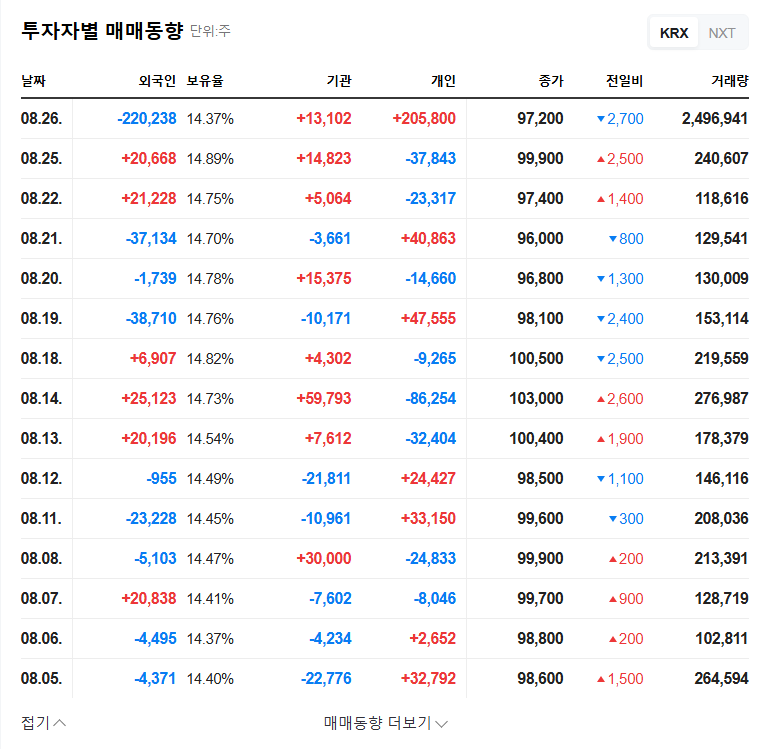The market is abuzz following the release of a pivotal CQV Co Ltd Major Shareholding Report. On October 10, 2025, a public disclosure revealed that Starchall Corporation has increased its stake in CQV Co., Ltd. (101240), signaling a clear intent to exert influence on management rights. This development has left investors questioning: is this a routine transaction or a strategic turning point that could redefine CQV’s trajectory?
This comprehensive CQV stock analysis explores the multifaceted implications of this event. We will dissect CQV’s robust fundamentals, evaluate the macroeconomic landscape, and weigh the potential positive and negative outcomes to help you formulate a sophisticated investment strategy.
The Disclosure: Unpacking the CQV Co Ltd Major Shareholding Report
The official filing on October 10, 2025, confirmed that Hong Kong-based Starchall Corporation acquired an additional 68,066 shares of CQV Co., Ltd. (101240) on the open market. This purchase increased its total ownership from 50.24% to a more commanding 50.87%. The stated purpose of this acquisition, as detailed in the report, is to actively influence on management rights. This is not merely a passive investment; it is a clear declaration of intent to steer the company’s future. For complete transparency, investors can review the Official Disclosure (DART Report).
By crossing the 50% ownership threshold and explicitly stating its intent, Starchall Corporation has effectively moved from being a majority shareholder to an active controlling entity, significantly altering the governance dynamics at CQV.
Why This Matters: Stabilizing Governance and Unlocking Growth
This strategic move by Starchall Corporation CQV has several profound implications, primarily centered around management stability and future growth potential.
1. Solidifying Management for Long-Term Strategy
With a secure majority, Starchall can shield CQV’s management from external pressures and internal disputes, allowing for the consistent execution of long-term business plans. This stability is crucial for undertaking ambitious R&D projects and expanding into new markets. As noted by corporate governance experts, stable leadership is often a precursor to sustained performance. For more on this, see this analysis on corporate governance from a leading financial publication.
2. A Deep Dive into CQV’s Strong Fundamentals
Starchall’s increased investment is a vote of confidence in CQV’s underlying business strength and future prospects. A detailed look reveals why:
- •Robust Core Business: CQV holds a commanding position in the global pearl pigment market, a key ingredient in cosmetics, automotive paints, and industrial coatings.
- •High-Growth Ventures: The color aluminum paste business is a significant growth driver, fueling a 20% year-over-year increase in operating profit in Q2 2025. This material is in high demand for premium electronics and electric vehicles.
- •Technological Edge & ESG Leadership: With R&D investment at 5.17% of sales and prestigious EcoVadis Platinum/Gold ratings, CQV demonstrates a commitment to both innovation and sustainable, responsible business practices.
- •Pristine Financial Health: A low debt-to-equity ratio of 29% and a net debt ratio of 7% showcase a sound and resilient financial structure. If you’re interested in learning more, check out our guide on how to analyze a company’s balance sheet.
Investment Outlook: Balancing Opportunity and Risk
The CQV Co Ltd Major Shareholding Report presents both compelling opportunities and notable risks that investors must carefully weigh.
Potential Positives
- •Enhanced Shareholder Value: An active controlling shareholder is more likely to push for initiatives that boost corporate value, such as strategic acquisitions, aggressive expansion into new markets, or improved capital allocation.
- •Strategic Alignment: Starchall may provide access to new supply chains, distribution networks, or technologies, creating powerful synergies that accelerate CQV’s growth.
Risks and Considerations
- •Information Uncertainty: Until Starchall clarifies its specific strategic plans for CQV, the market may face a period of uncertainty, which can lead to volatility.
- •Financial Overhang: Existing financial instruments, such as convertible bonds (CBs), could lead to share dilution if exercised. These factors must be considered alongside the new ownership structure.
- •Macroeconomic Headwinds: As a major exporter, CQV remains sensitive to global economic slowdowns, protectionist trade policies, and currency fluctuations, which are independent of its ownership structure.
Investor Action Plan: A ‘Neutral’ Stance with Vigilant Monitoring
Given the current information, a ‘Neutral’ investment stance on CQV is prudent. The positive developments in governance are promising, but they are counterbalanced by a lack of clarity on future strategy and persistent macroeconomic risks.
Investors should closely monitor the following key signals:
- •Any official communications or press releases from Starchall Corporation regarding its plans for CQV.
- •Changes in CQV’s board of directors or key executive positions.
- •Announcements of new strategic initiatives, capital expenditure plans, or M&A activity in upcoming earnings reports.
A cautious but watchful approach is recommended until these uncertainties are resolved and Starchall’s concrete growth strategies for CQV are brought to light. This CQV stock analysis concludes that while the long-term outlook has improved, short-term patience is key.






